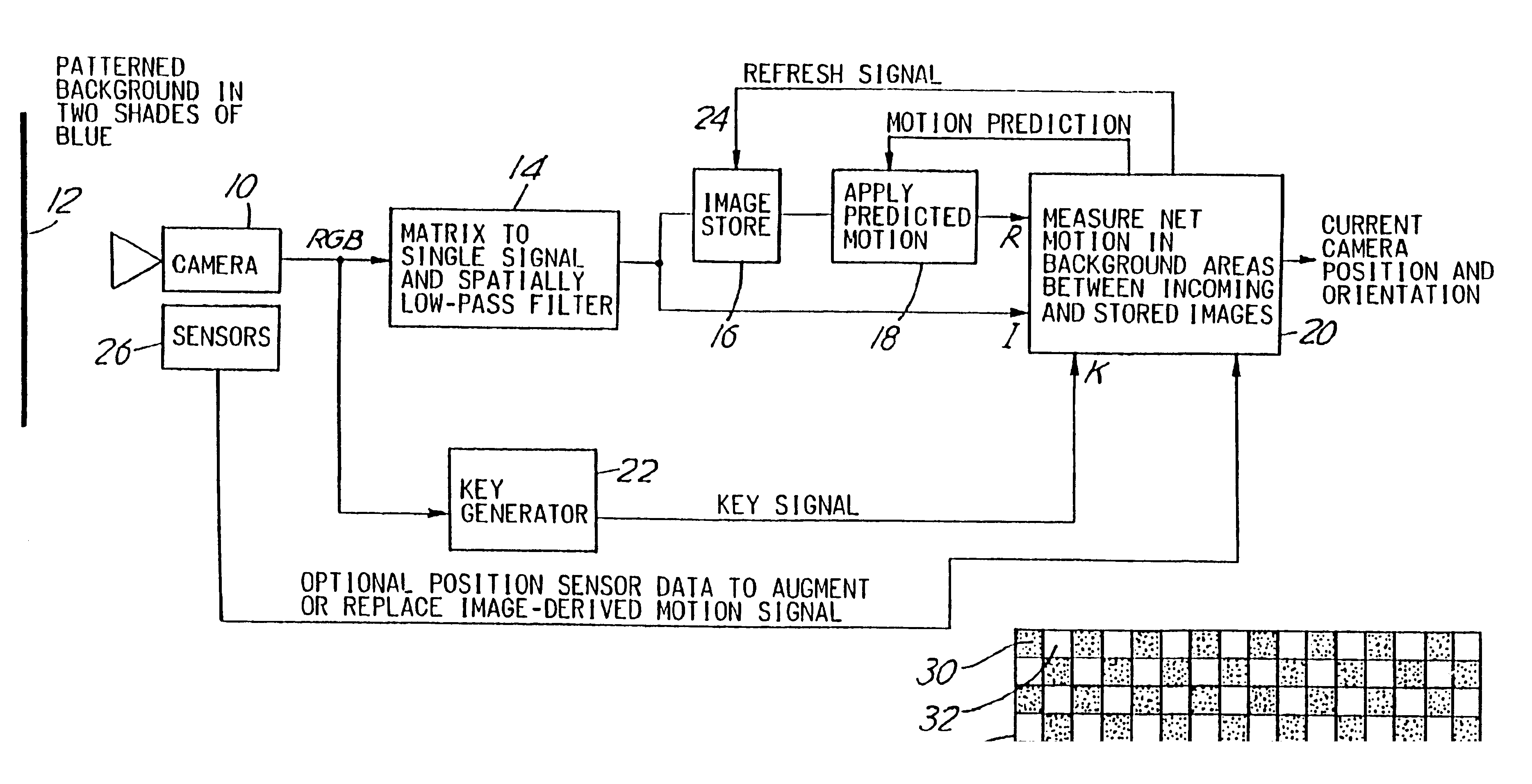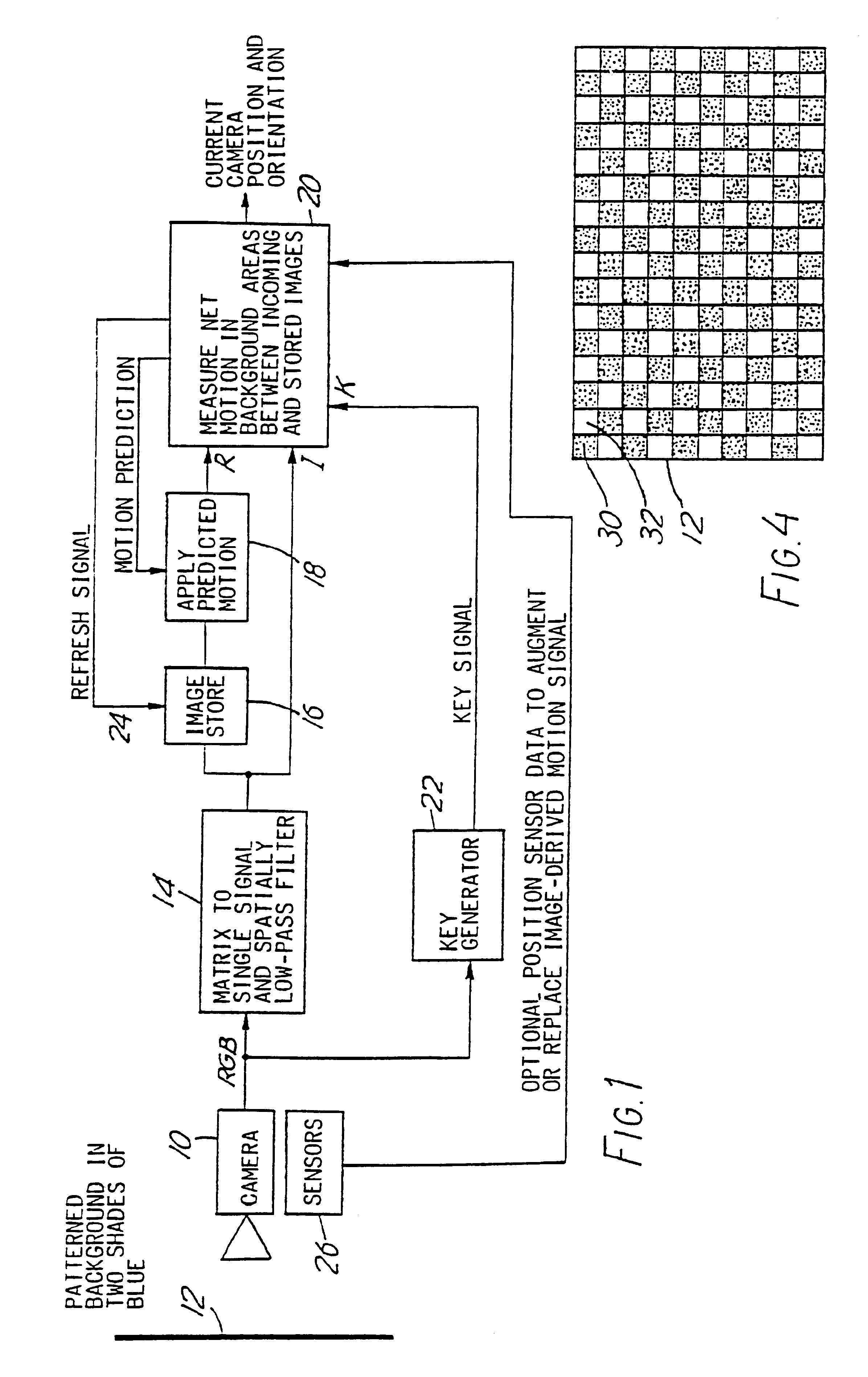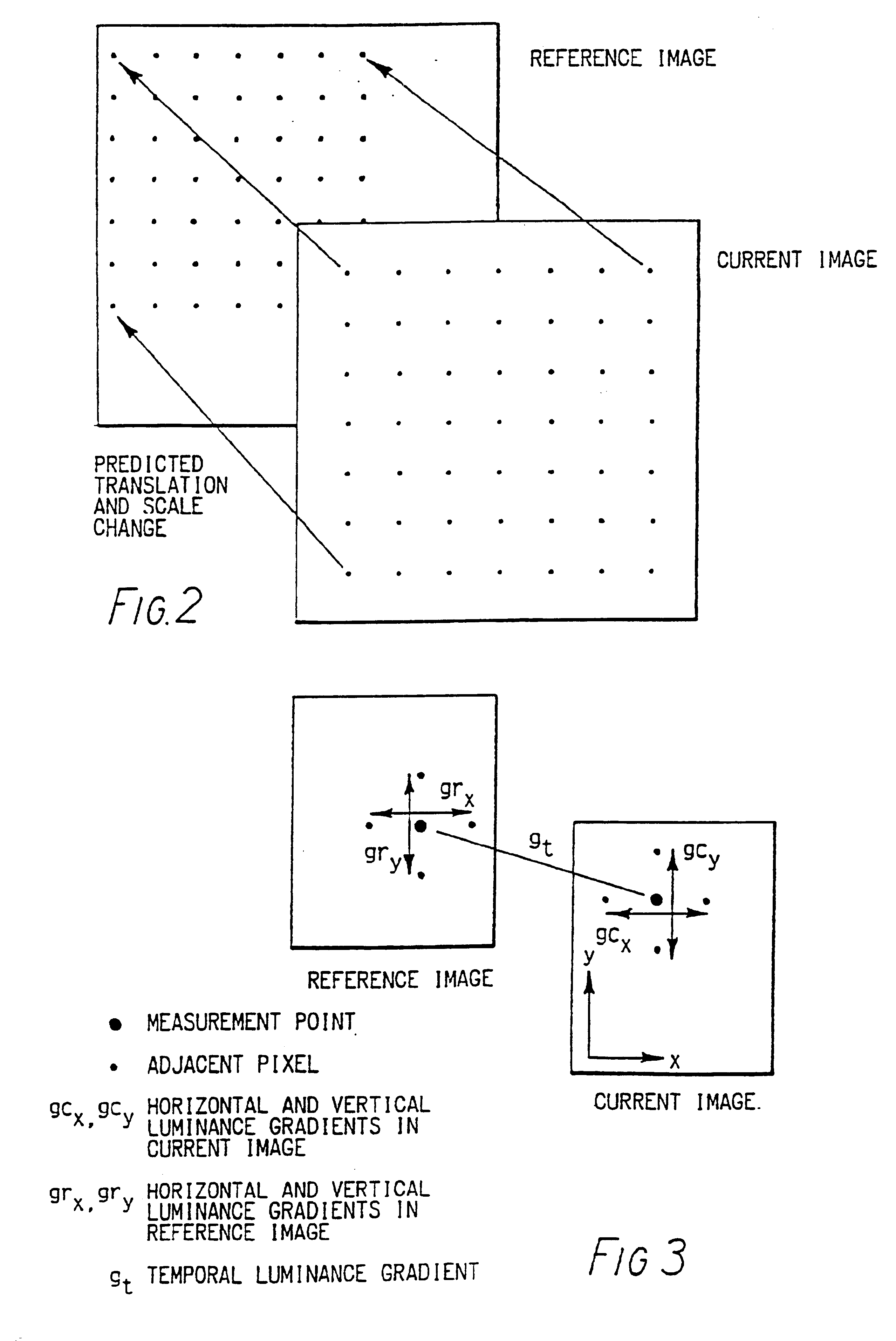Derivation of studio camera position and motion from the camera image
a technology of motion and camera image, applied in image enhancement, color signal processing circuit, instruments, etc., can solve the problem of impracticality of providing an appropriate number of well-distributed reference points in the imag
- Summary
- Abstract
- Description
- Claims
- Application Information
AI Technical Summary
Benefits of technology
Problems solved by technology
Method used
Image
Examples
embodiment 2
ation of Global Motion Parameters An alternative and preferred method of determining global translation and scale change is to derive them directly from the video signal. A method of doing this is described in reference 7 by [Wu and .[.Kittel.]. .Iadd.Kittler .Iaddend.1990]. We have extended this method to work using a stored reference image and to use the predicted motion values as a staging point. Furthermore, the technique is applied only at a sub-set of pixels in the image, that we have termed measurement points, in order to reduce the computational load. As in the previous embodiment the RGB video signal is matrixed to form a single-component signal and spatially low-pass filtered prior to processing. As described previously, only areas identified by a key signal as background are considered.
The method is applied by considering a number of measurement points in each incoming image and the corresponding points in the reference image, displaced according to the predicted translat...
PUM
 Login to View More
Login to View More Abstract
Description
Claims
Application Information
 Login to View More
Login to View More - R&D
- Intellectual Property
- Life Sciences
- Materials
- Tech Scout
- Unparalleled Data Quality
- Higher Quality Content
- 60% Fewer Hallucinations
Browse by: Latest US Patents, China's latest patents, Technical Efficacy Thesaurus, Application Domain, Technology Topic, Popular Technical Reports.
© 2025 PatSnap. All rights reserved.Legal|Privacy policy|Modern Slavery Act Transparency Statement|Sitemap|About US| Contact US: help@patsnap.com



